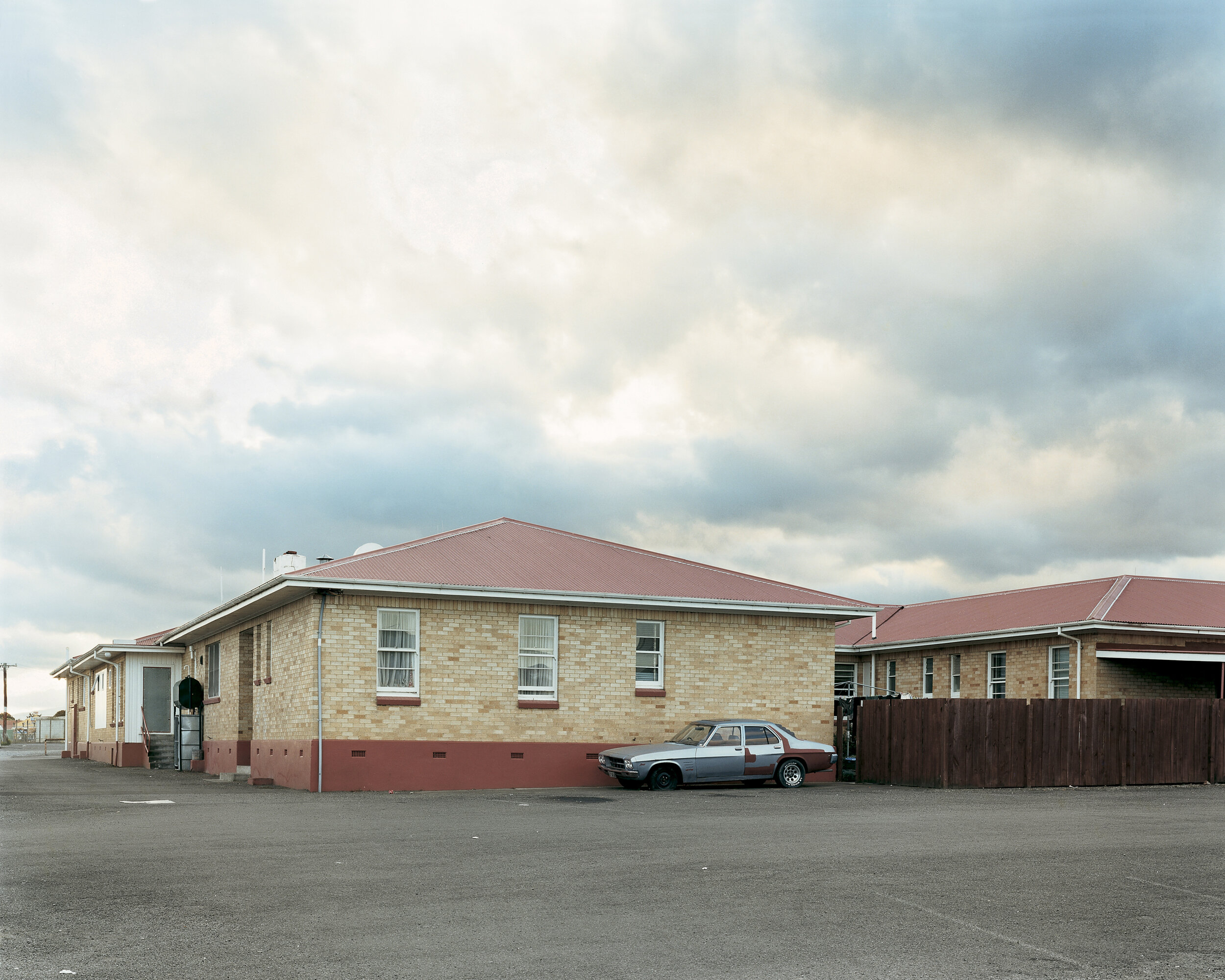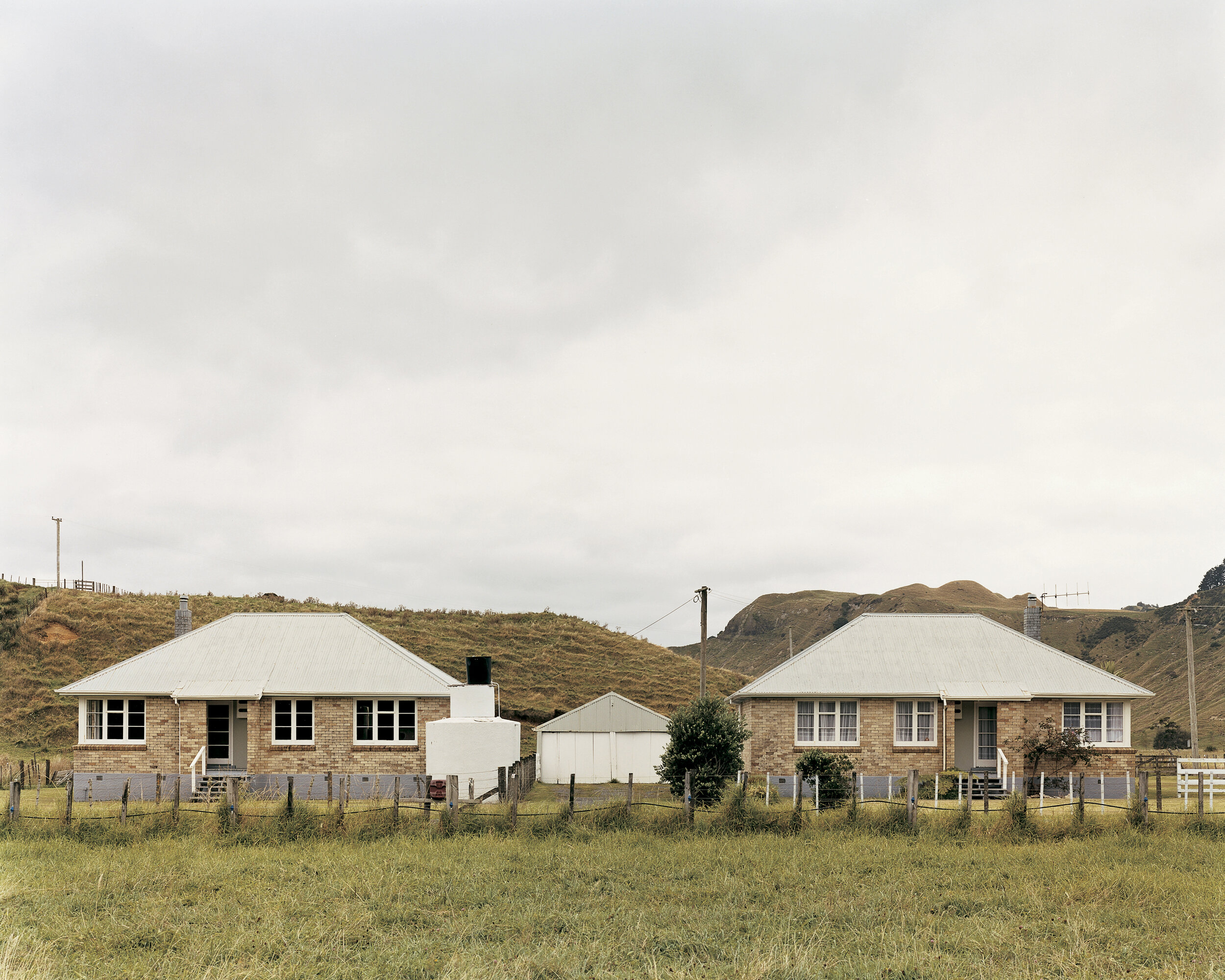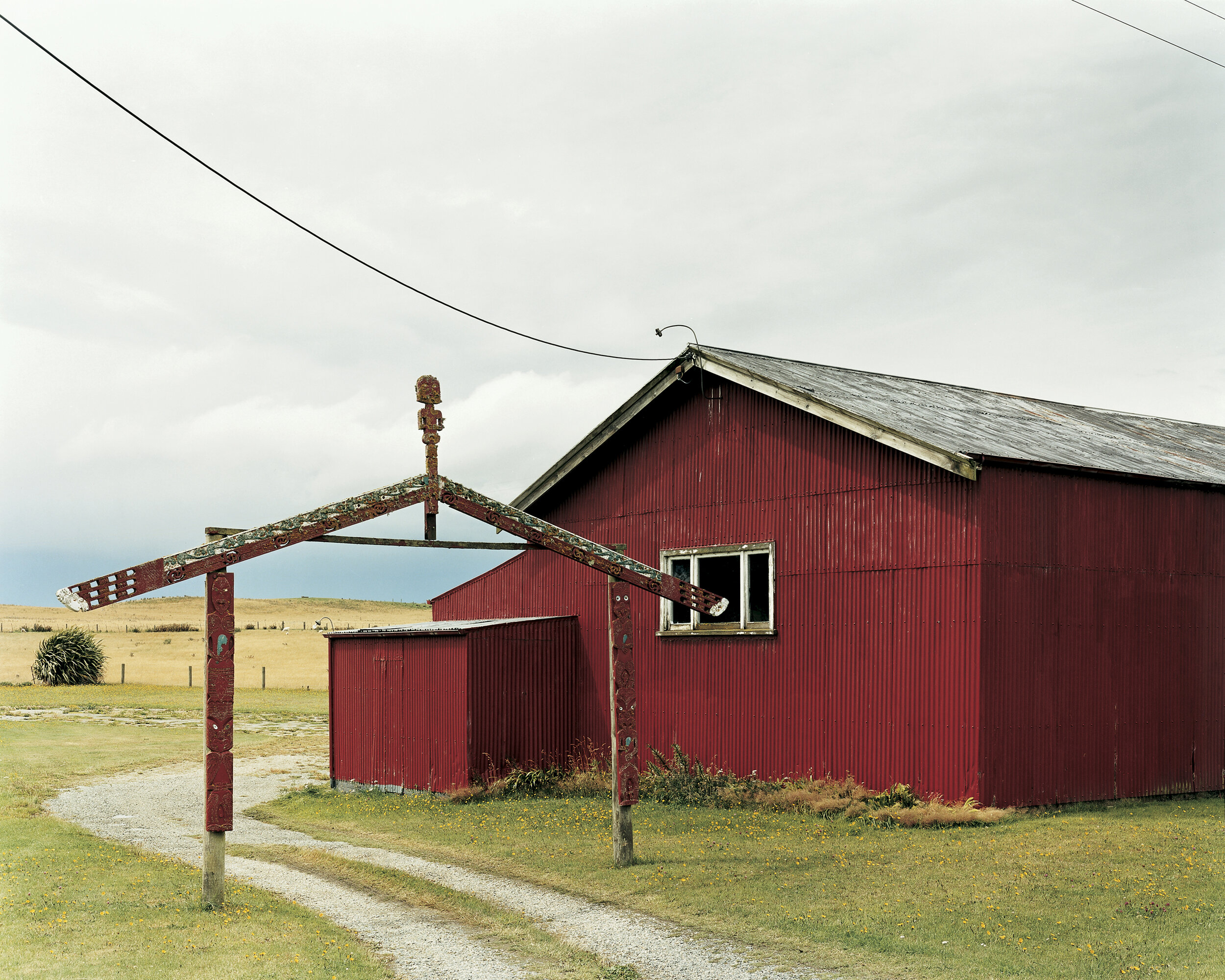Milk Run - reviewed
Milk Run
Derek Henderson
Hastings Art Centre | Holt Gallery
4 July - 11 October 2020
SPA_CE Gallery, Napier
3 July - 1 August 2020
Milk Run zine - Bad News Books
Reviewed for PhotoForum by Tobias Buck, 22 July 2020
Derek Henderson, 522a Fenwick Street Hastings 7-04am 22nd January 2020
Hastings is sometimes called the engine-room of Hawke’s Bay. The annual dawn service for Anzac Day is held in the centre of town, where people have gathered before sunrise. The service always pauses so the morning train can roll through. It’s coming from the port, through Tomona and Whakatu, and it rattles on heavily towards Wellington. Bells and clanging goes on for a minute or two, shaking the ground and dark morning air outside Hastings Library and the Art Gallery where everyone stands. After a familiar nod by locals and officials, proceedings are picked up again.
It happens every year. It’s just how things are.
There’s a video work called Timeslice by Hastings artist Daniel Crooks, exhibited at ACMI in Melbourne 2007, that reminds me of this train. Spliced frames stretch out the moment all the carriages pass. Time feels both familiar and elastic as a single moment extends horizontally.
Just east of the Hastings town centre are three suburbs the railway crosses through the middle - Mahora, Mayfair and Parkvale, from north to south. It’s the houses of these areas, on the path of his old milk route, that are the subject of Derek Henderson’s Milk Run now showing at the Hastings City Art Gallery.
Derek Henderson, 209 Park Road North Hastings 6-32am 4th March, 2019
People living here might have kids going to school, or playing sports later on at one of the parks. The waterpark Splash Planet in Parkvale used to be called Fantasy Land. There are now water slides and a lazy river and hotdogs. The campgrounds next door get packed in January, when it’s sunny. The Farmers Market nearby is popular on Sundays, not far from the Mitre10 Mega and The Warehouse. Just outside town there used to be freezing works. There’s still fruit processing centres and cold storage for apples.
Hawke’s Bay is known for its Art Deco and Spanish Mission facades but the properties shown here are steadfastly suburban. Some might be old state houses. They’re stylish. 1960s and 1970s. Weatherboards. Cinder blocks. Stucco. They look unlikely to have changed in decades. Each image is a single property section, usually with the house square to the camera. There’s trimmed hedges and cropped grass. Tidy. Modest. There’s bright flowers in gardens. Pastel colours behind low fences. Curtains are closed. Homeowners are unlikely yet to be up.
And each photo is given space in the Holt Gallery of the Hastings Art Centre. The gabled roof and white walls of the space give plenty of room for the moderate image size, with a wall each, making the visitor focus on the details of each picture. Pinned to the wall, there are no heavy frames interceding. The hanging seems as quiet as the streets at dawn.
Derek Henderson, 1017 Sussex Street Hastings 7-16am 17th January 2020
There’s a similar visual evenness to the series. Landscape orientation, cropped similarly. Roadside, pavement, garden beds, shrubs, doors, windows, roof - all are stacked in vertical rhythm. Then the same light grey, early-morning sky. The proportions are the same. Even with an empty section like 1017 Sussex Street, Hastings. 7.16am, 17th January, 2020, or the house that peeps over the hedge in 617 Mairangi Street, Hastings. 6.41am, 20th January 2020. Appropriately, it is this wall of obscuring hedge that greets visitors to the exhibition, but around the walls the images similar format emphasises the ordinariness of the houses. They appear elemental, outside of time, their flat fronts oddly monumental in contrast to the quiet streets. The two-dimensional house and sidewalk is reminiscent of the arcade game PaperBoy from the 1980s. You can imagine where you might aim a paper as you ride by.
Derek Henderson, 617 Mairangi Street Hastings 6-41am 20th January 2020
Henderson’s works often have a sense of emptiness or the remote to them. In 2005 The Terrible Boredom of Paradise (ISBN 9780646445472) showed rural, passing scenes of small town New Zealand. His series on Mercer, Patagonia, and Great Barrier Island all have the persistent shadow of isolation front and centre. This is the visual vernacular of the quotidian, the backyard, the found. This is the language of the unremarkable made noteworthy, caught in detail, in passing. It’s worth noting that Henderson’s career contains portraiture also, and that he has a great ability to show candidness and humanity. But, in particular series like this, people are absent. Intentionally. It is only their belongings on display, like artefacts of a lost culture.
(Slideshow - extract from The Terrible Boredom of Paradise)
When viewed in a single collection, similar in layout and curated and accumulated like examples, it’s hard as a viewer not to prescribe some sense of further intention to the scenes. Is this a second world, of found houses and people? Melancholic or beautiful? There’s a feel of the mundane and everyday, but also warmth. Nostalgia. These are nice houses. Appealing. Full of colour and design. Well kept. It’s part of the images' ironic and humorous appeal, and this uncertainty holds the viewer’s attention.
There’s a socio-political element it’s possible to infer. Milk Run is also a portrait of a neighbourhood not so effectively lifted up by the rising tide of neo-liberal economics that New Zealand took such a dose of in the 1980s. These are the strongly local suburbs of a rural city, fairly unchanged in decades, an idiom that runs between the historical, political narratives of urban prosperity and empathetic, national welfare policy. There’s much fancier, upper-middle class residences just a street or two over.
Derek Henderson, 1032 Fitzroy Avenue, Hastings 6.41am 21st January 2020
But nothing feels heavy-handed. Since what we're seeing here are places revisited from Henderson’s
childhood the images are more particular in theme and form than his other series. The street addresses are exact and timestamps are detailed in titles, like 1032 Fitzroy Avenue, Hastings. 6.41am, 21st January, 2020. This specificity of focus and subject has the effect of making the images tend towards something more timeless and universal.
With its elevated sense of the banal, this aesthetic recalls Gregory Crewdson’s photos from the dark heart of contemporary Americana. The absence of people, the eerie quietness and the grey skies, all lend a similar cinematic, mythical, almost ghostly quality. This is a visual tradition that also runs through Edward Hopper's paintings, to Tim Burton's Edward Scissorhand and David Lynch's Lost Highway.
These new world bungalows are specific enough in style to also be seen in other places. This could be Echo Park or Silverdale in Los Angeles. A techni-colour screening of Paradise Lost might be playing at a drive-thru theatre cinema round the corner. It could be Sydney, Melbourne, or maybe Oakland. Or a town in Northern California. Flat land, low-buildings under open skies with pine trees and the beach nearby.
Seeing the exhibition now, with quarantine having just finished in New Zealand, the quiet streets empty of traffic of Milk Run seem oddly appropriate. Even though these are 2020 images from pre-Covid times, the viewer might easily credit an additional sense of pause to these city suburbs.
The streets Derek Henderson has photographed are quiet at 6am. Hawke’s Bay sunshine, the main characteristic of summers here, is not yet out. Each home looks timeless and is suffused with pale morning light. Regular. Even. These stills of central Hastings float out to us.
The railway that bisects these three suburbs ends in the capital. Close by that station is the National Library with the world’s largest collection of Milton’s poetry. Kept behind glass, volumes of Paradise Lost and Paradise Regained sit back to back on shelves. Bookends to the same story. Echoes of that theme however, range across New Zealand’s countryside.
It’s a reality not often observed. All the better to see it shown here in this focused, detailed, and understated light.
Tobias Buck is a writer who grew up outside Hastings and now splits his time living between Hawke’s Bay and Europe. He has a background in Writing and Cultural Studies and was the last recipient of the Katherine Mansfield Short Story Award. In 2019 he was the joint winner of the Landfall Essay Prize with his piece ‘Exit. Stage Left’.
Review supported by funding from Creative New Zealand.










